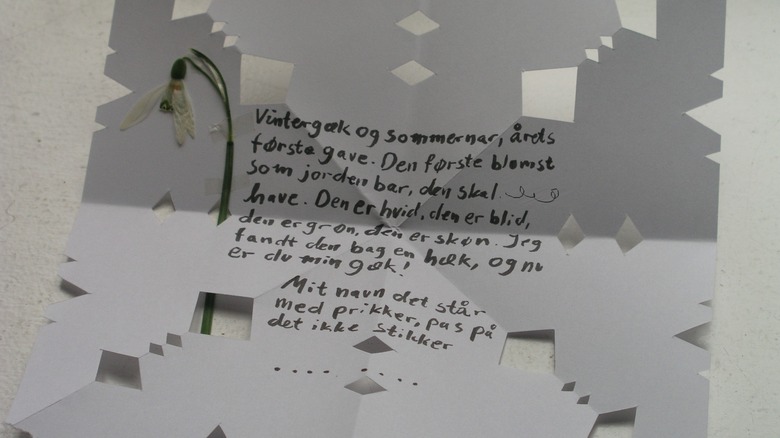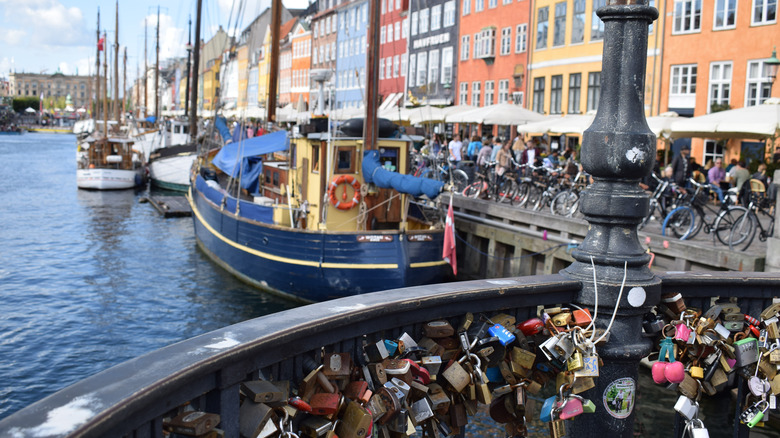How Denmark Celebrates Valentine's Day
Denmark may not have begun celebrating Valentine's Day until the 1990s, but young Danes were quick to put their own twist on the holiday. While Americans give red roses on February 14, the Danish celebrate the day by giving friends and romantic partners pressed white flowers called "snowdrops" (named because of their late winter flowering season), celebrity horticulturist David Domoney wrote on his blog. Another part of the tradition is the exchange of a "lover's card" — originally a transparent card, which showed an image of the giver presenting a gift to their partner. However, now a full range of commercial Valentine's Day cards has become customary, per HuffPost.
Also on February 14, Danes often give something called a "gaekkebrev" (pictured above). In English, this translates to a "joking letter." They are typically light-hearted in nature and written as a poem or rhyme on intricately cut paper. The note is unsigned, but the recipient is given a hint as to whom the writer might be with a dot for each letter in his or her name. According to tradition, if the recipient correctly guesses the sender of the gaekkebrev, they will get a chocolate Easter egg later that year, according to Denmark.
Valentine's Day is catching on but there are generational differences
Although the number of Danes who enjoy Valentine's Day is on the rise, it's certainly more celebrated among younger people. According to a 2020 poll from Statista, 25% of 18-34 year-olds celebrate Valentine's Day, while 14% of 35-54 year-olds do. Just 4% of 55-74 year-olds take part in any celebrations on February 14. There seems to be a gender divide, as well. In 2015, an opinion poll found that only 2% of Danish men enjoy celebrating Valentine's Day, according to a report from The Local. It worried one of Denmark's chocolate companies so much that it brought in an American neuroscientist to conduct a "scientific love experiment" to see what happens when men are generous with their partners (perhaps with chocolate?) and the partners respond positively to that generosity.
And sometimes a direct cash payment can bring attention to a fledgling holiday. In 2016, a Danish couple set a world record in a Valentine's Day contest for the longest hug, which lasted 40 hours, 43 minutes, and 47 seconds, TV Syd reported. The 10,000 kroner (about $1500 at the time) prize was the main motivation for literally sticking together for nearly two straight days. "It was both physically and mentally hard but also really fun," the couple said. "The nighttime hours were extra hard but we were good at supporting each other, which is probably why we made it so long."

